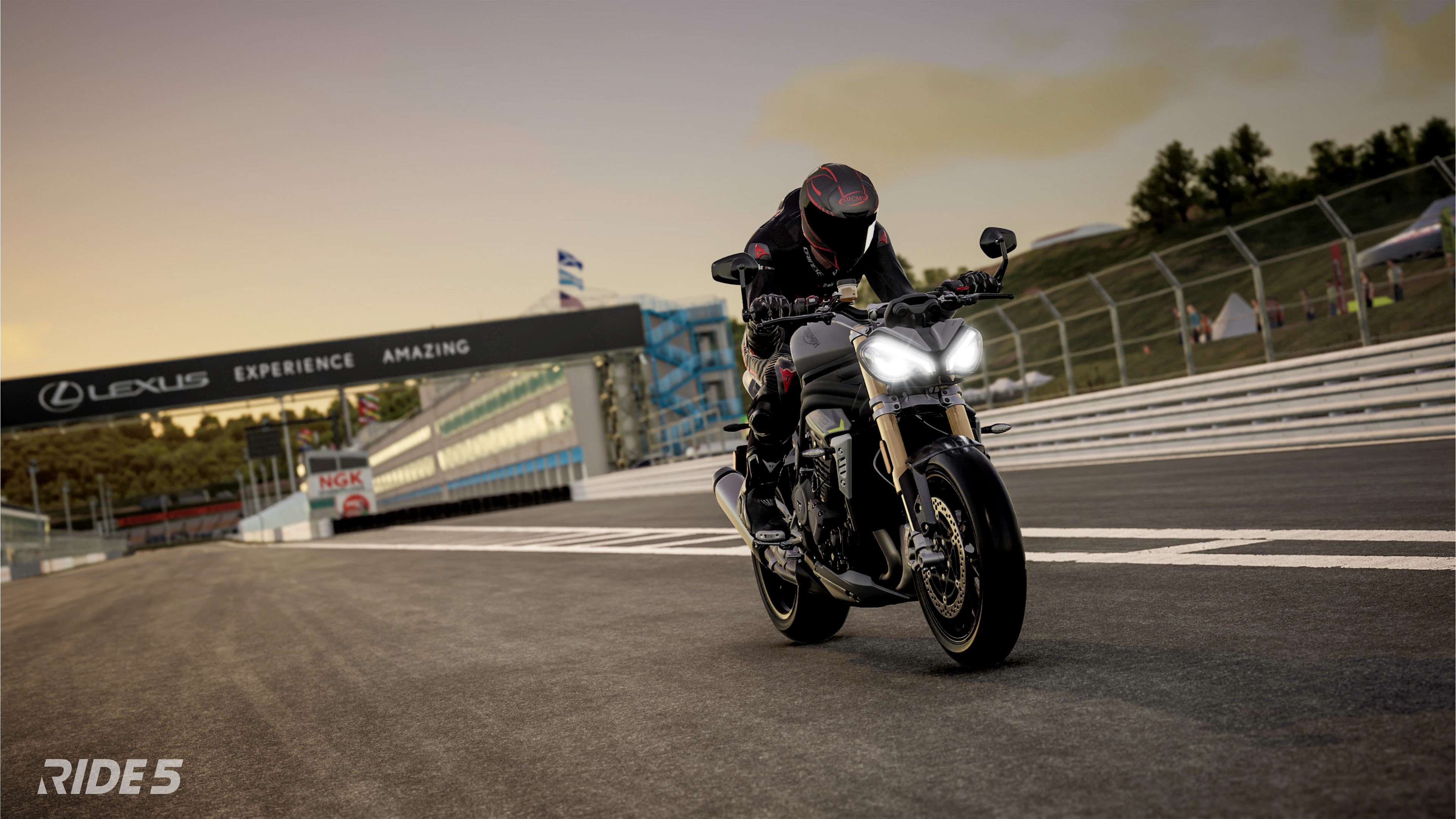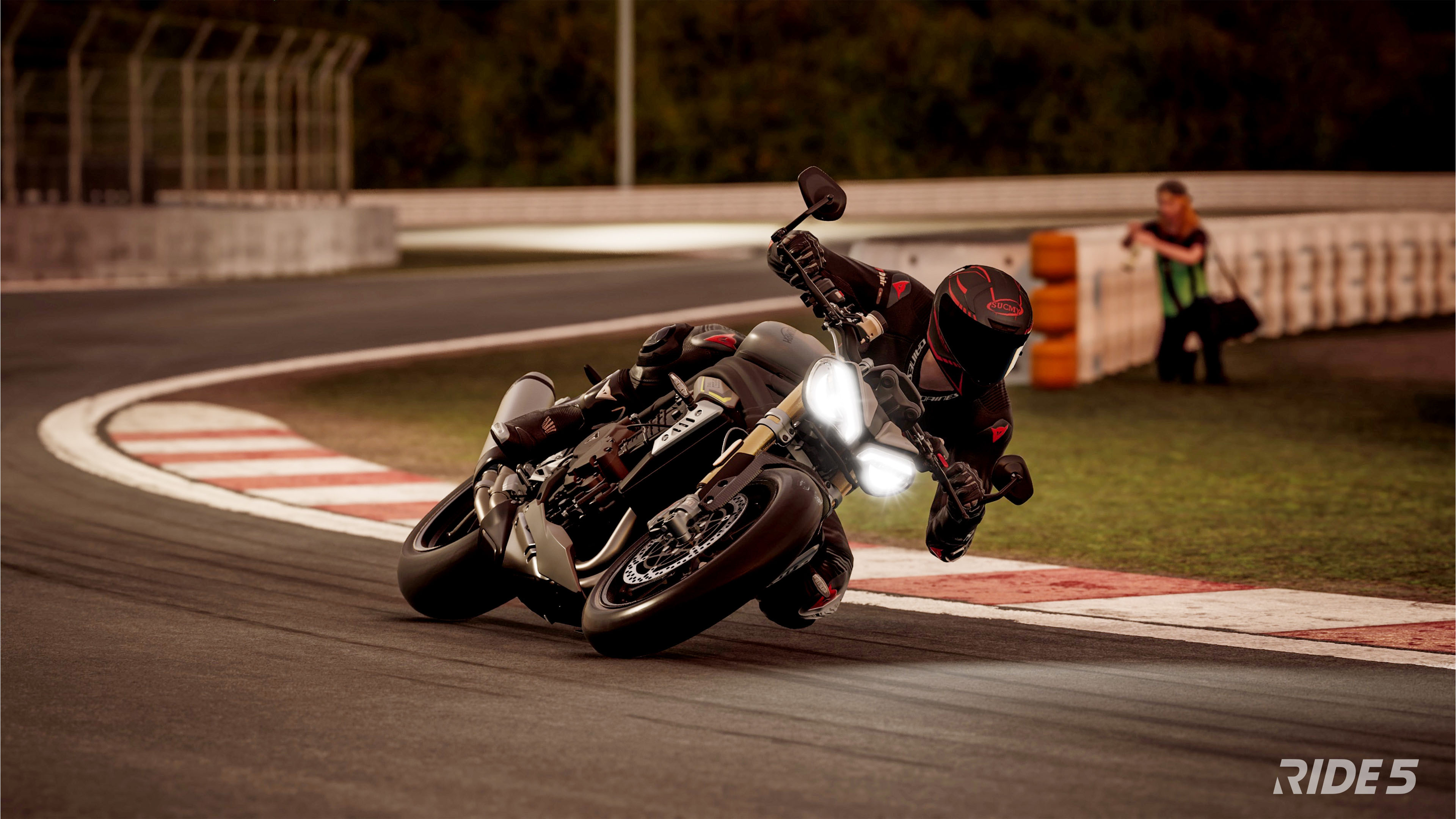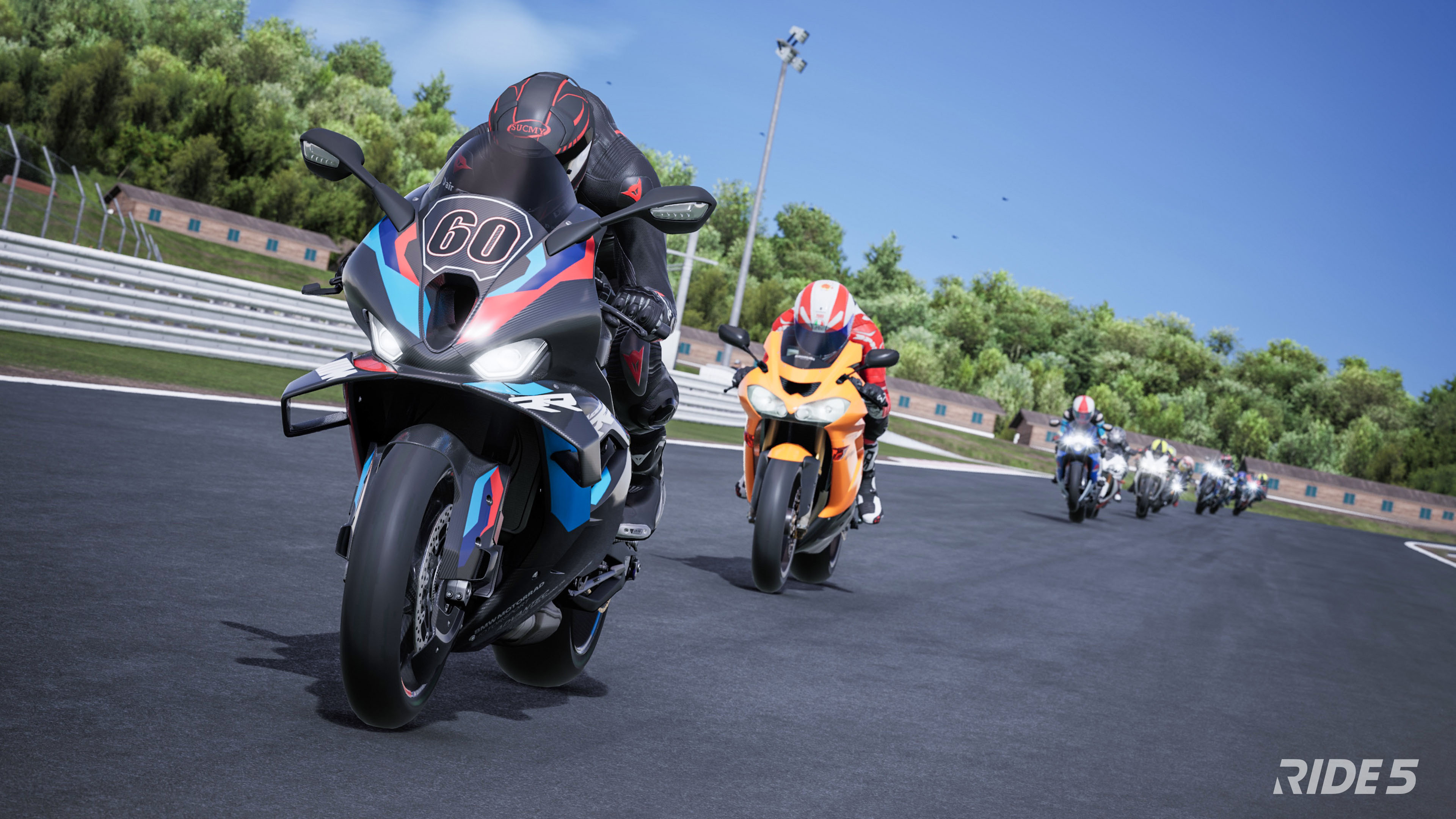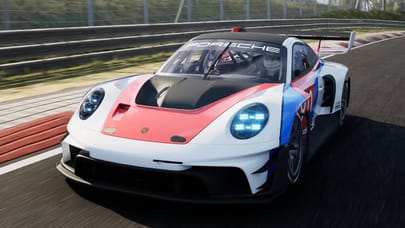
Ride 5: the Gran Turismo of motorbikes that keeps fooling people into thinking it’s real life
But Milestone’s racing sim has bigger objectives than going viral when it arrives this August
It’s a grey, sodden morning. A pack of motorbikes snakes its way through the narrow streets of a typically British village. You watch what looks like a helmet-mounted GoPro of a particularly risky rider, pulling off incredibly dangerous passes on rain-soaked tarmac. He’s going way too fast. They all are.
It takes about 20 seconds to realise that what you’re watching isn’t real race footage. At first it looks far too detailed to be a game, and there are numerous details you’d swear aren’t digital - the liquid sloshing about in the brake fluid reservoir, the movement of the rider’s head, the reflection of the road in the side mirrors, how bloody relatably overcast and dour the weather is. But digital it is - like many viewers in 2021, you just got duped by Ride 4.
“From the sales side, it was a huge kick for us,” Milestone game design manager Andrea Basilio told TopGear.com. The gameplay clip in question, taken from a wet race in first-person cam, went viral shortly after release and has since picked up 11 million views on YouTube. Call of Duty might be accustomed to those numbers, but the motorbike sim genre isn’t.
Oddly enough, this wasn’t the first time the Ride series had gone viral for its photorealistic gameplay. It happened when the first game launched in 2015. Facebook users started circulating clips and speculating on what they were watching - was this incredibly reckless riding caught on camera, or a gem? It’s safe to say, then, the series has always had an eye for visual detail.
Ride 5 is fast approaching, releasing for PS5, Xbox Series X and PC on 24 August and once again it brings a huge collection of vintage and modern street bikes, racers and prototypes spanning several decades. But whereas the series was once pitched as Gran Turismo for bikes, since Polyphony’s four-wheeled racing sim has changed direction, Ride 5 is asserting a different identity now.
“It’s starting to become difficult to follow Gran Turismo in every aspect,” says Basilio. “Our vision is evolving and starting to find its own way. We are starting to build the experience of a vibrant world of motorcycling. Gran Turismo has this museum kind of approach.
“We have a lot of circuits and vehicles in the game. But in the narration of the experience, we are starting to go away from the Gran Turismo approach.”
Gran Turismo 7 added Café sections to the old formula in its most recent release for PS5, where you take on curated challenges that showcase various aspects of car culture. There are manufacturer museums too, where endless slideshows of old vehicles and moustachioed inventors await. Ride 5, as Basilio alludes, isn’t trying to compete with that glossy presentation. It’s all the bikes you could ever ogle at, on most of the circuits you’d ever want to ride them around. It really is that straightforward.
Rival riders add a bit more structure to the career mode this time, however. All your AI opponents exist in a league, “like the ATP tennis rankings”, notes Basilio, and your objective is obviously to reach the top. Several riders among the ranking board have distinct characters and backstories. 28-year-old Brazilian AMA Supercross champion Luana Pinto, for example, will be hounding you from race to race.
It doesn’t sound like it would make much impact on your enjoyment, but in this kind of racer your opponents are too often simply names on a grid. It’s hard to take much pride in beating Anonymous Driver 9, or to feel particularly bitter about them overtaking you. Attaching characters to your on-track adversaries is a big deal. It gives you a chance to invest that bit more in the results of your own races, rather than simply ticking off objectives and moving on to the next event.
Top Gear
Newsletter
Thank you for subscribing to our newsletter. Look out for your regular round-up of news, reviews and offers in your inbox.
Get all the latest news, reviews and exclusives, direct to your inbox.
Much like in Milestone’s MotoGP series, the AI riders here are smarter than you might think. Traditional offline opponents in racing games are basically robots, following instructions about the lines they need to take around a track, when to brake, and when to get back on the throttle. But in Milestone’s games, they’re going about the task in the opposite way, a bottom-up approach: they’re self-learning AI entities that have figured out the fastest lines and the ideal braking points for themselves. That means they might still make mistakes. They might be too slow to react to your divebomb. They might even divebomb you. The only difference between them and human opponents is that you don’t get 20 minutes of headset mic abuse afterwards.
For the rival system in Ride 5, Basilio tells us the neural AI system has been tweaked to allow for distinct characters to make themselves known.
“Some riders are more strong than the others. They’re the rivals in this world and they have a special kind of [behaviour]. They act differently, because we train them to be more difficult to beat. They have a smarter kind of racing strategy.”
If you’ve ever spent the wee hours of the morning watching polygons learn to walk on YouTube, you’ll know the jist. You give an AI an objective, and tool them up with inputs to achieve it. Then they try to achieve that objective, over and over again, learning what brought them closer to it and what didn’t work each time. That constant iteration eventually teaches the AI how to achieve the objective without human intervention. So when it comes to the rivals in Ride 5, they’re not just racing line bots with their engines turned up. They’re actually smarter at using their bike’s inputs, because they’ve had more track time.
Given that Ride 5 introduces dynamic weather - aka rainy conditions that will absolutely, definitely wipe you out if you as much as breathe on the rear brake mid-corner - it’s good news that the neural AI used to power your opponents is also powering your riding aids.
“Basically when you turn on the [neural aids],” says Basilio, “there’s an AI that helps you to make the right inputs.”
Since the AI knows the optimal inputs to get an opponent rider round a lap, it can analyse your own inputs and step in when they look wildly different to what they know to be optimal inputs and course-correct for you. MotoGP 23 uses the same neural aids, and they’re a lot less intrusive than traditional auto-braking. It doesn’t feel like you’re having control wrenched away from you.
And when you feel like you’re a match for any neural AI, the master of Ride 5’s 200+ bike roster in dynamically changing conditions, there’s always the 24-hour endurance races to take on. There’s a mid-session save system this time, though. Pfff. Part-timers.
Trending this week
- Car Review
BMW iX3










